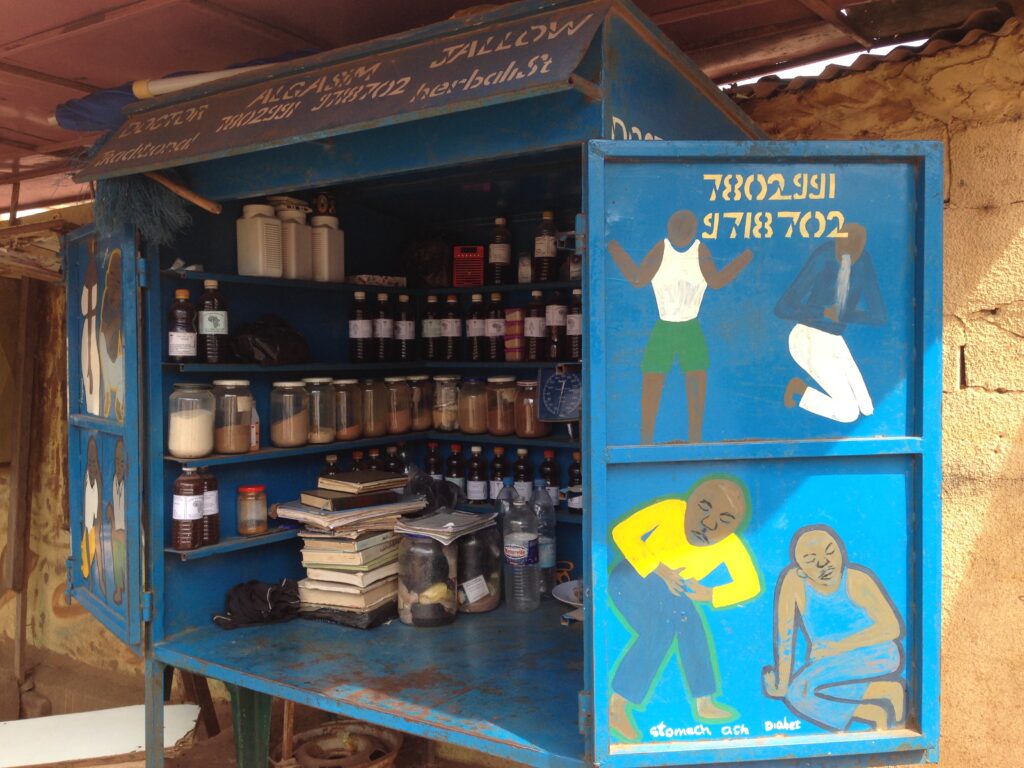West African Herbal Medicine

There are many plants in Africa that can be used for medicinal purposes and more than 4000 are used for this purpose in the tropical regions of Africa. Medicinal plants are used in the treatments of many diseases and illnesses, the uses and effects of which are of growing interest to Western societies.
The value of African Herbalism In Africa, about 80% of the population rely on traditional medicine for their basic healthcare needs (WHO). Medicines from natural products are affordable, accessible and are generally safe.
Emergence of drug resistant strains of infectious diseases and dose limiting toxic effects are a growing concern world wide. This calls for the search for new medicines, especially antimicrobials, from various sources.
Some herbal medicines have been translated into modern remedies, such as the anti-malarial group of Artemisinin isolated from Artemisia annua, a herb that was known in Chinese medicine to treat fever.
Read more on the Value of Herbal Medicine
The History of Herbalism People ave been using medicinal plants since the beginning of mankind. Archaeological remains from early civilisations show that plants were used in burials and other rituals.
Herbal lore was passed down from generation to generation and gradually information was methodically collected from native peoples and compiled in herbal pharmarcopoeias. One of the first written records of herbal medicines was Chinese, in around 2800BC in the ‘Pen Ts’ao’ by Shen Nung.
Throughout the Middle Ages botanicals were the only medicines available and most households would have small herb gardens. By the 17t century knowledge of herbal medicine ws widely spread throughout Europe and in 1649 Nicholas Culper wrote his famous pharmacopoeia which was one of the first medical manuals intended for the use of the lay person, and is still widely quoted from today.
In modern healthcare pharmaceutical drugs, often derived from medicinal plants, have largely replaced herbal medicines.
Herbal preparations There are many forms in which herbs can be administered, the most common of which is herbal tea or a (possibly diluted) plant extract. Infusions and decoctions are hot water extracts of herbs. Tinctures are alcoholic extracts of herbs, which are generally stronger than herbal teas. Herbal wine and elixirs are alcoholic extracts with a lower ethanol percentage.
Many herbs are applied topically to the skin in a variety of forms. Essential oil extracts can be applied to the skin, usually diluted in a carrier oil. Salves, oils, balms, creams, and lotions are other forms of topical delivery mechanisms. Inhalation, as in aromatherapy, can be used as a treatment

Health Conditions
- Nervous system (Brain & Nerve System)
- Infectious diseases
- Bacterial Infections
- Viral Infections
- Fungal infections
- Parasitic Infections
- Endocrinology (for example Diabetes, Hyperthyroidism)
- Cardiovascular System (Hypertension, Heart Diseases)
- Respiratory System (Asthma, Bronchitis etc)
- Digestive System (Gastric Ulcer, Diarrhoea, Constipation etc)
- Musculoskeletal (Fractures & Strains, Rheumatism etc)
- Urology (Kidney, Bladder and Urinary Tract conditions)
- O&G and Reproduction
- Obstetrics (Prengancy & Delivery)
- Dermatology (Skin conditions)
- Psychiatry
First Aid
- Wounds
- Fevers
- etc
Herbal Medicines in Alphabetical Order
B Baobab
…
S Senna
- A
- B
- C
- D
- E
- F
- G
- H
- I
- J
- K
- L
- M
- N
- O
- P
- Q
- R
- S
- T
- U
- V
- W
- X
- Y
- Z
Who we are & What we do
How can you contribute?
Disclaimer
Miscellaneous:
Contact information, Who we are, Links to WAHO and other institutions…